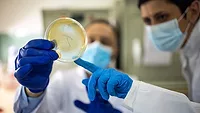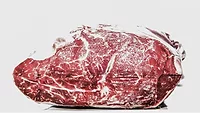UK Reports on Salmonella Instances, AMR in 2021

Credit: Pixabay (pixabay) via Pexels
The UK Animal and Plant Health Agency (APHA) has published a report that provides an overview of incidences of Salmonella in people, livestock and dogs, animal feed and pet food, and the pathogen’s overall level of antimicrobial resistance (AMR). The report is based on data collected by APHA throughout England, Wales, and Scotland in 2021.
In 2021, a total of 5,625 Salmonella isolates from humans were reported to the UK Heath Security Agency (UKHSA), Public Health Wales, and Public Health Scotland, which is a slight increase from the 5,362 isolations reported in 2020. However, in 2021, reported isolations were 41.2 percent lower than in 2019, which APHA attributes to the impact that the COVID-19 pandemic had on national surveillance for major gastrointestinal pathogens.
The total number of Salmonella isolation reports from cattle, sheep, pigs, and poultry decreased by 14.3 percent from 2020; however, trends were variable across serovars. From 2020 to 2021, reports of S. Montevideo, S. Dublin, and S. Typhimurium increased by 68.1 percent, 36.6 percent, and 25.8 percent, respectively, and S. Infantis increased from one isolation in 2020 to 42 isolations in 2021. Meanwhile, S. Enteritidis, S. 13,23:i:-, and S. Indiana fell by 67.6 percent, 61.0 percent and 32.3 percent, respectively.
The most commonly isolated serovar from cattle was S. Dublin, accounting for 58.7 percent of total reports. Among small ruminants (including sheep), S. enterica was most prevalent, making up 47.9 percent of isolations. S. Typhimurium (73.1 percent) was the most common serovar among pigs. Regarding poultry, S. Montevideo (24.1 percent) and S. Anatum (22.1 percent) were the most common isolates found in chickens and turkey, respectively.
From 2020 to 2021, isolations of Salmonella from animal feed increased by 10.3 percent. S. Typhimurium was the most common isolate.
The reporting of Salmonella in dogs was not mandatory prior to 2021, so there is no comparable data available. In 2021, there were 731 isolations of Salmonella from dogs, the majority (98.9 percent) of which were from reports of clinical disease. S. Typhimurium was the most common serovar. There was also an 8.1 percent increase in Salmonella isolates from raw pet food from 2020 to 2021.
Finally, of the 4,507 Salmonella isolates examined in 2021, there was a slight increase of AMR. In 2020, 68.3 percent of isolates were susceptible to all 16 tested antibiotics, and in 2021, 67.3 percent of isolates were susceptible.
Looking for quick answers on food safety topics?
Try Ask FSM, our new smart AI search tool.
Ask FSM →









